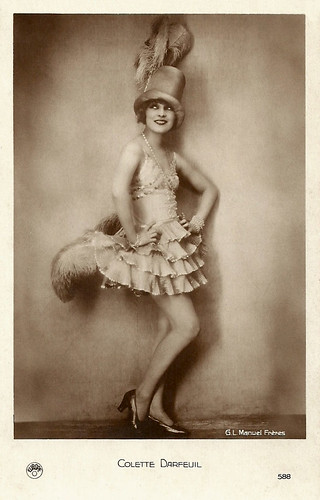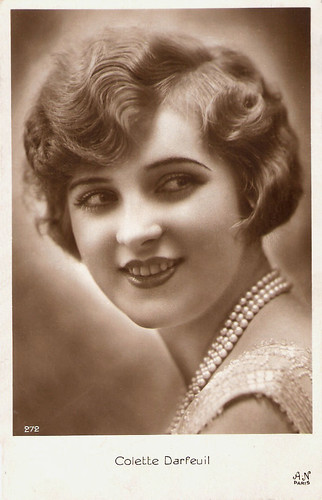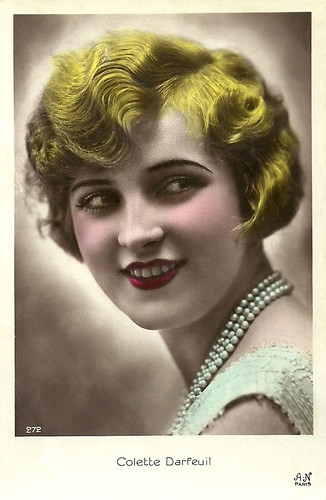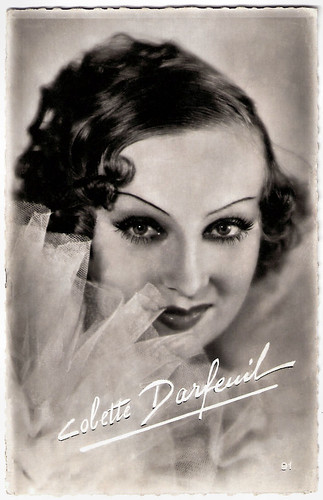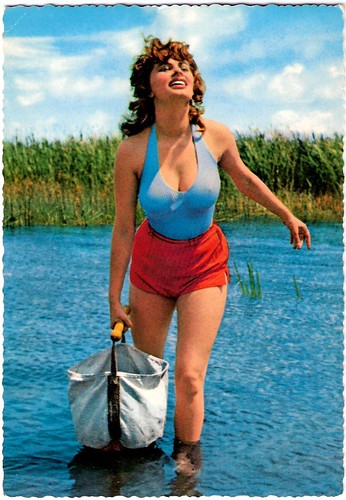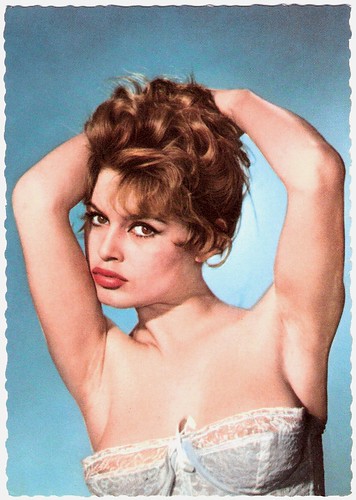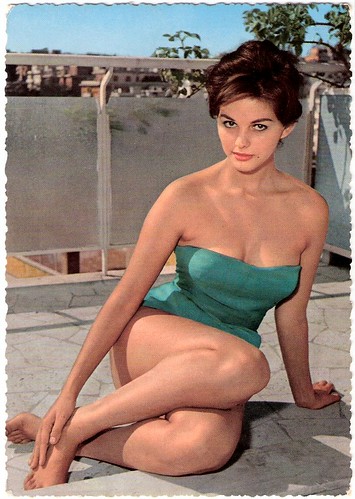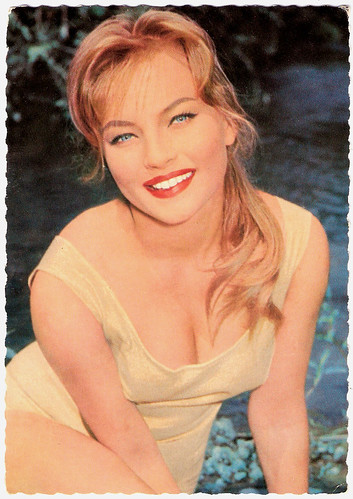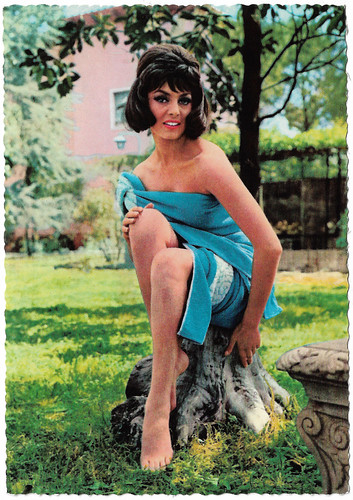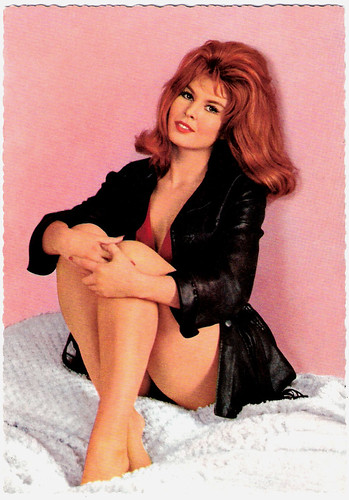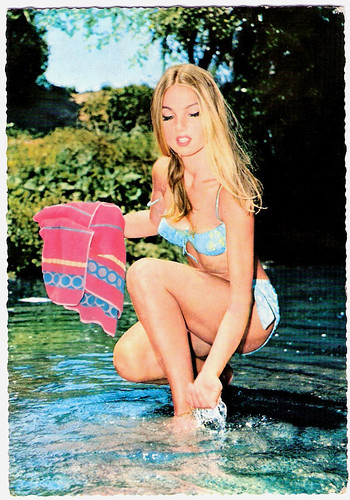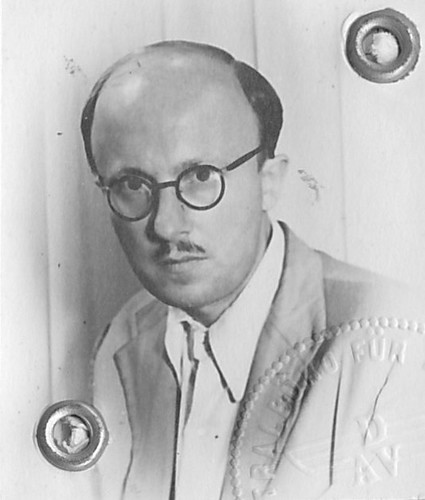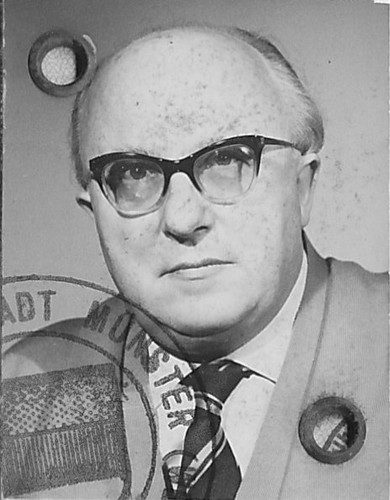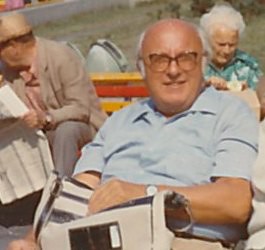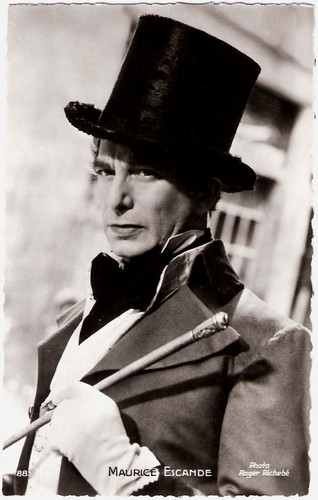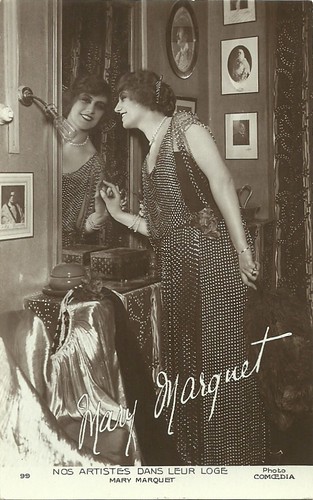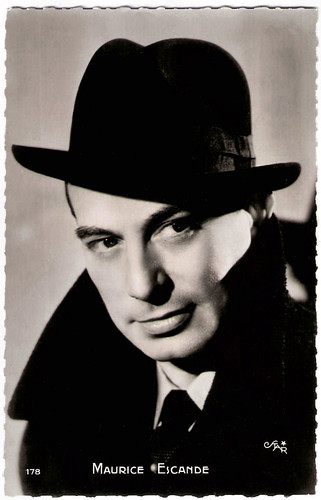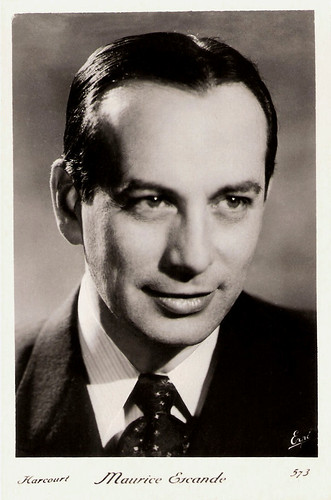
German postcard by Film-Foto-Verlag, no. 185. Photo: Star-Foto-Atelier / Tobis.

German postcard by Film-Foto-Verlag, no. A 3709/1, 1941-1944. Photo: Star-Foto-Atelier / Tobis.

French postcard by Editions P.I., Paris, no. 93. Offered by Marq, la vedette des chocolats. Photo: C.C.F.C.

German postcard by Ufa/Film-Foto, Berlin-Tempelhof, no. FK 1030. Photo: Sam Lévin, Paris / Prisma / Centra Europa. Publicity card for Clivia (Karl Anton, 1954).
Titanic
Claude Farell was born Paulette von Suchan (some sources say Ludowika Paula Keller) in Vienna, Austria in 1914 (some sources say 1918). She was the daughter of a dentist. Her stepfather was a diplomat and so Paulette Koller traveled all over Europe.
After finishing school she had a dance and acting training, and then played in theatres in Brussels. She made her stage debut as Paula Varchi. Later, she was also known as Monika Burg, Catherine Farell and Claude Farell.
Her film debut was in the German comedy Der Kleinstadtpoet/The Small Town Poet (Josef von Báky, 1940) starring Paul Kemp. She had her first leading role as Monika Burg in the comedy Zwei in einer großen Stadt/Two in a Big City (Volker von Collande, 1942) with Karl John.
Two years later she appeared in Titanic (Herbert Selpin, Werner Klingler, 1943), a German propaganda film made during World War II in Berlin by Tobis Productions for Ufa. The film was commissioned by Nazi Propaganda Minister Joseph Goebbels and it was the most expensive German production up until that time, costing more than 4 million Reichsmarks (almost $200,000,000 today). The film used the sinking of the British luxury liner Titanic in 1912 as a setting for an attempt to discredit British and American capitalist dealings and glorify the bravery and selflessness of German men.
After World War II, Titanic became one of the German ‘trophy films’ that were requisitioned by the Soviets. It was dubbed into Russian and screened across the Soviet Union. According to IMDb, many older Russian people mistakenly consider this film to be a Russian production. Burg herself fled for the Russians and drove with her little daughter on her bike from Berlin to Paris.

German postcard by Film-Foto-Verlag, no. A 3924/1, 1941-1944. Photo: Star-Foto-Atelier / Tobis.
German postcard by Film-Foto-Verlag, no. A 3539/1, 1941-1944. Photo: Star-Foto-Atelier / Tobis.
German postcard by Kunst und Bild, Berlin, no. S 713. Photo: Berolina / Deutsche London / Wesel. Publicity card for Spion für Deutschland/Spy for Germany (Werner Klingler, 1956).
German postcard by Ufa, Berlin-Tempelhof, no. FK 1066. Photo: A. Grimm / Central Europa Film / Prisma.
Fellini
After the war, she worked in France as Catherine Farell. She played for instance the German prostitute in Dédée d'Anvers (Yves Allégret, 1948) featuring Simone Signoret. She had the female lead in La nuit blanche/The White Night (Richard Pottier, 1948) opposite Pierre Brasseur.
In England, she made The Woman's Angle (Leslie Arliss, 1952) and in Italy, she was Alberto Sordi’s sister in Federico Fellini’s comedy-drama I Vitelloni (1953). Sordi stars with Franco Fabrizi and Franco Interlenghi in a character study of five young Italian men at crucial turning points in their small-town lives. Recognised as a pivotal work in the director's artistic evolution, the film has distinct autobiographical elements that mirror important societal changes in 1950s Italy. I Vitelloni won the Venice Film Festival Silver Lion in 1953.
In Germany, Farell played a supporting part in the musical Die Drei von der Tankstelle/The Three from the Filling Station (Hans Wolff, 1955), a remake of the 1930 UFA film. It was one of a series of remakes in West Germany made during the 1950s of major hits during the Weimar and Nazi eras. Then followed the thriller Spion für Deutschland/Spy for Germany (Werner Klingler, 1956) starring Martin Held and Nadja Tiller. The film depicts the German spy Erich Gimpel's actions during the Second World War.
During the 1960’s she was seen in films like the crime film Das Geheimnis der schwarzen Witwe/The Secret of the Black Widow (Franz Josef Gottlieb, 1963) starring O. W. Fischer, and the Edgar Wallace thriller Im Banne des Unheimlichen/The Zombie Walks (Alfred Vohrer, 1968) starring Joachim Fuchsberger. Her film career ended with the sex comedy Mir hat es immer Spaß gemacht/How Did a Nice Girl Like You Get Into This Business? (Will Tremper, 1970) starring Barbi Benton. Later she was only seen in the Austrian TV film Vor Gericht seh'n wir uns wieder/We’ll meet again in court (Peter Weck, 1978).
Later she lived in Saint-Jean-le-Priche, an associated commune of Mâcon, France. In 2008, Claude Farell passed away in Saint-Jean-le-Priche. She was 93.
German postcard by Ufa/Film-Foto, Berlin-Tempelhof, no. FK 976. Photo: Lars Looschen, München.
German postcard by Kunst und Bild, Berlin, no. A 978. Photo: J. Arthur Rank Film. Publicity still for Die Nacht ohne Moral/The night without morals (Ferdinand Dörfler, 1953).
German postcard by Kunst und Bild, Berlin, no. T 622. Photo: CCC-Film / Herzog-Film / A. Grimm. Publicity still for Hotel Adlon (Josef von Báky, 1955).
German postcard by Kolibri-Verlag G.m.b.H., Minden-Westf., no. 1774. Photo: Berolina / Herzog-Film / Wesel. Publicity still for Die Drei von der Tankstelle/The Three of the gas station (Hans Wolff, 1955).
Sources: Thomas Staedeli (Cyranos), Les Gens du Cinema (French), Wikipedia (German and English), and IMDb.
This post was last updated on 21 August 2023.
